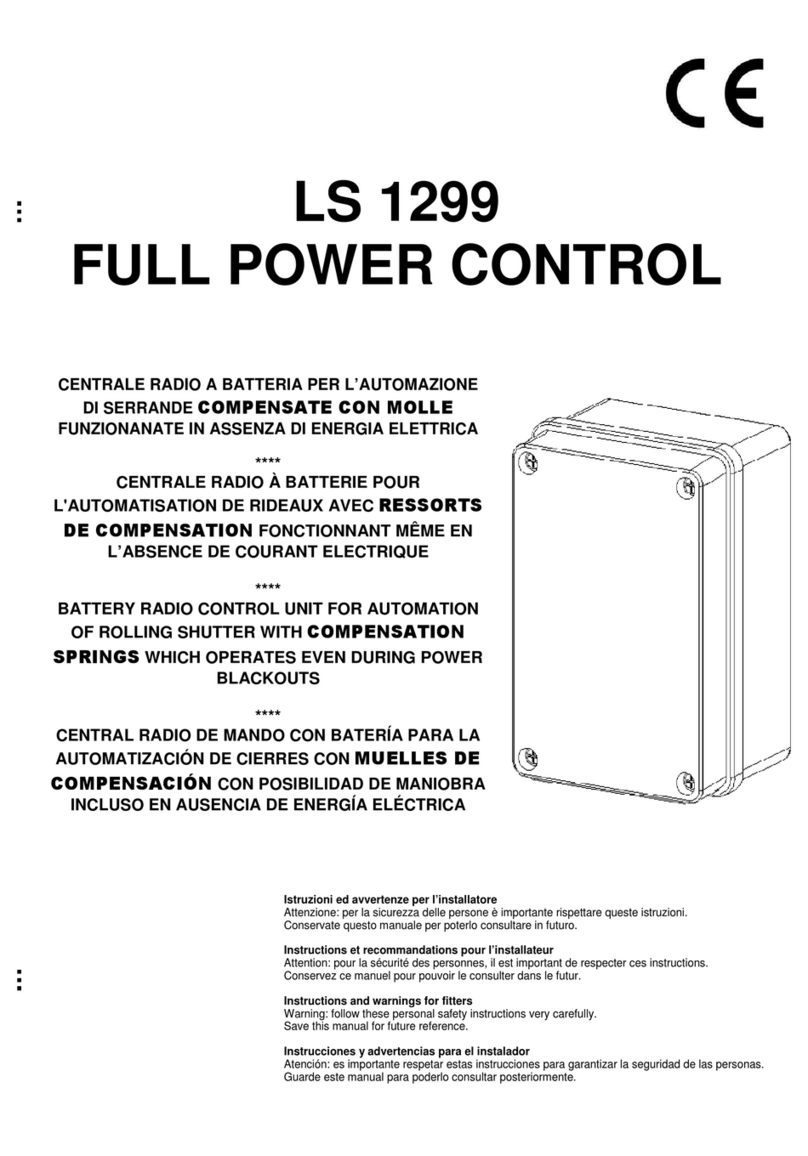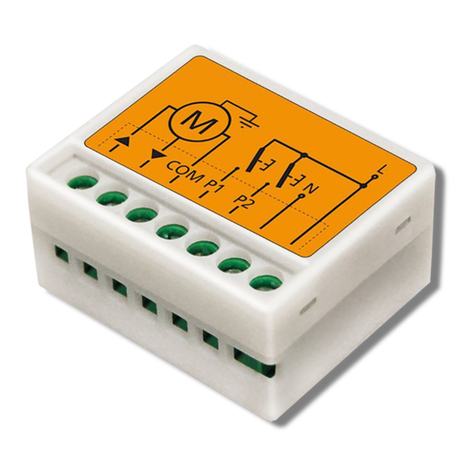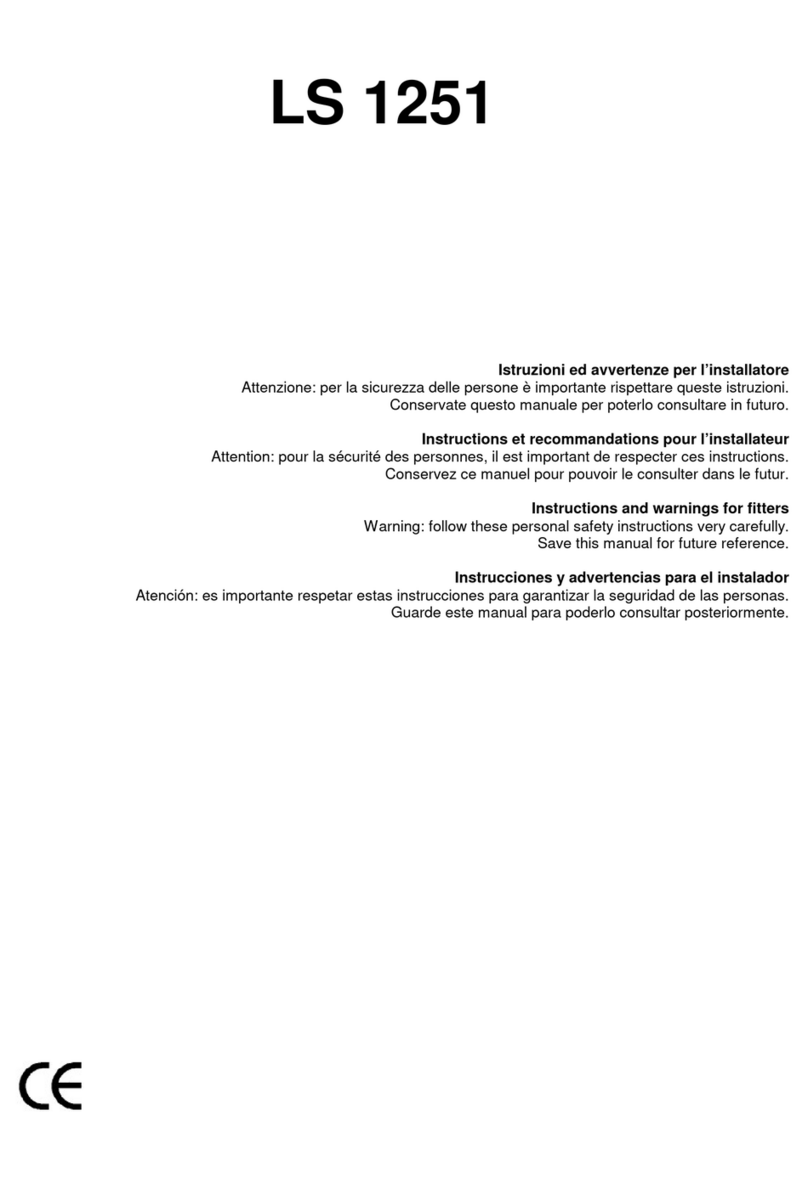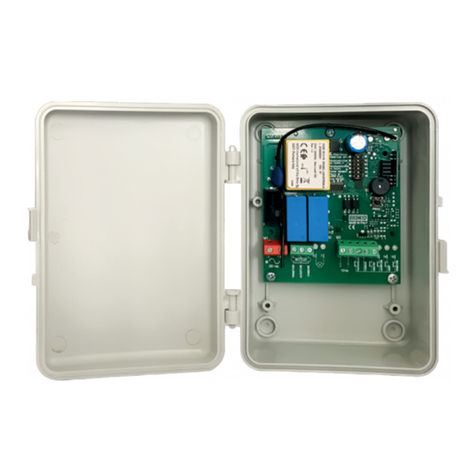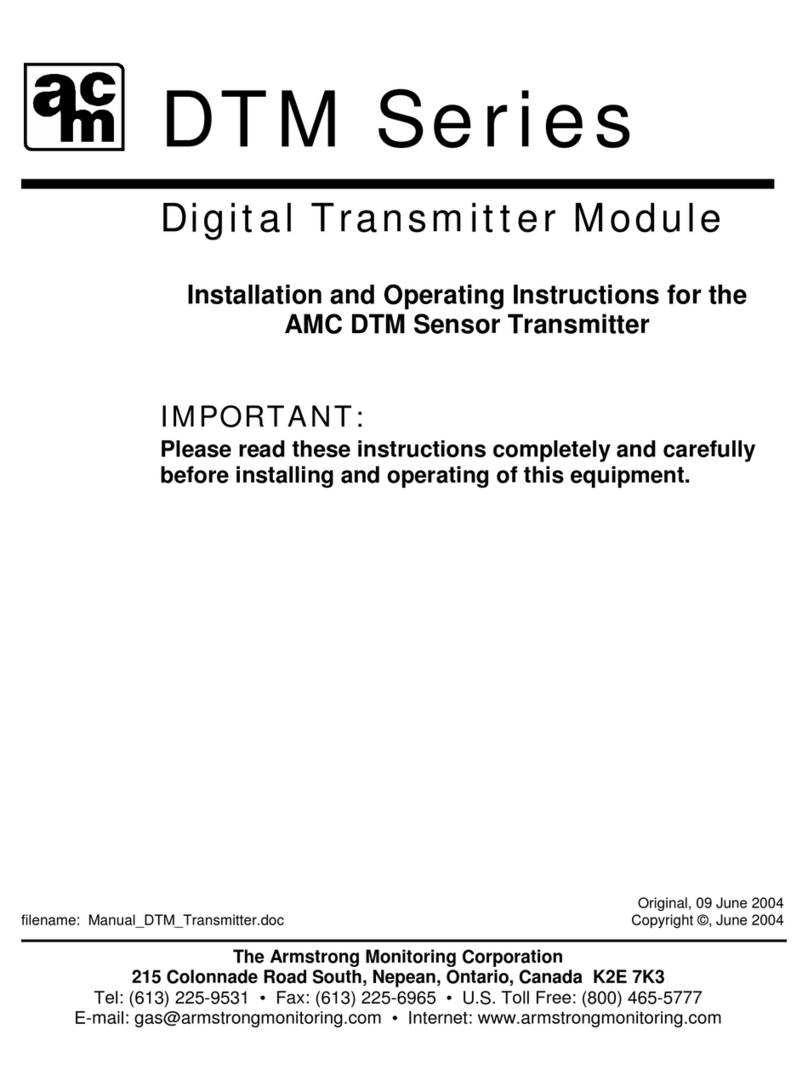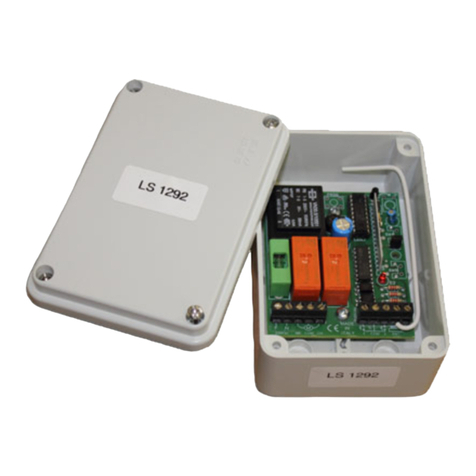10
FSPOT
Procéder à la mémorisation de la radiocommande « GLOBAL » selon les indications du paragraphe 3
pour tous les stores à activer.
6. ANNULATION DES CODES DES RADIOCOMMANDES (« MÈRE » incluse)
On pourrait avoir besoin d’annuler tous les codes des radiocommandes mémorisées, inclus celui de «
MÈRE » (en cas de perte); dans ce cas, presser et tenir pressé le bouton extérieur (en position d’arrêt)
jusqu’à ce que la centrale signale l’effective annulation des codes, par trois cycles consécutifs brefs de
« OUVERTURE » et « FERMETURE » du store (ou volet roulant). En l’absence de bouton poussoir
externet cette procedure peut être éxécutée en simulant l’actionnement du boutton poussoir en met-
tant en contact les câbles de couleur rouge et noir (commande à basse tension v.c.f. part. 12).
Nous vous rappelons que dans la phase successive de mémorisation de nouveaux codes, la première ra-
diocommande mémorisée sera codifiée et reconnue par la centrale comme la nouvelle « MÈRE ».
Pour mémoriser la nouvelle radiocommande mère, suivre la procédure indiquée au paragraphe 2.
7. INSTALLATION DE L’ANEMOMETRE WINDY
Un éventuel excès de vent peut endommager la structure portante du store et le store lui-même, pour remé-
dier à ce problème, la centrale « SPOT » est prédisposée à l’installation d’un anémomètre.
L’anémomètre doit être installé près du store bien exposé au vent, et connecté aux câbles de couleurs Rouge
et blanche, pour les montages électriques voir fig. 6 paragraphe 12.
Le seuil d’intervention de l’anémomètre peut être positionné sur deux vitesses : 15 km/h ;
N.B. L’INTERVENTION DE L’ANEMOMETRE CAUSE L’INHIBITION DU FONCTIONNEMENT DE LA
RADIOCOMMANDE ET DU BOUTON EXTERIEUR PENDANT 8 MINUTES ENVIRON.
Attention ! Vérifier que l’intervention de l’anémomètre fasse effectivement effectuer la course de fer-
meture du store. Si ce n’est pas le cas, invertir le sens de marche (cf. par. 9) dubien invertir les phases
d’alimentation du moteu (noir et marron voir fig.6)
8. PROGRAMMATION DE LA VITESSE D’ENCLENCHEMENT DE L’ANEMOMETRE.
L’appareil Spot permet de programmer la vitesse d’enclenchement de l’anémomètre (15 Km/h ou 30
Km/h) en agissant uniquement sur la radiocommande "MERE".
La programmation s’effectue de la façon suivante:
1) Alimenter le "Spot";
2) Appuyer, et rester appuyé sur les deux touches de la radiocommande " MERE " jusqu’à ce que le
motoréducteur signale, par deux mouvements brefs du store, (l’un montant, l’autre descendant), le
démarrage du mode programmation;
3) Appuyer sur n’importe quelle touche de la radiocommande "MERE ":
Le motoréducteur va alors indiquer les paramètres actuels de vitesse d’enclenchement de l’anémo-
mètre, de la façon suivante:
•1
mouvement bref du motoréducteur dans les deux sens (ouverture/fermeture); 15Km/h
•2
mouvements brefs du motoréducteur dans les deux sens (ouverture/fermeture/ouverture/fermeture); 30Km/h
4) A ce moment-là, il est possible de modifier la vitesse de seuil en appuyant sur n’importe quelle tou-
che de la radiocommande " MERE " : à chaque pression de la touche, le motoréducteur indiquera
(tel que décrit au point 3) les paramètres actuels de la vitesse de seuil.
5) Une fois la vitesse programmée, il suffit de laisser passer 30 secondes sans effectuer aucune opéra-
tion pour quitter le mode programmation.
N.B! Important! En cas de defaillance de la radiocommande “ mere”, la programmation de la vitesse
de seuil s’effectue les codes memorises et en reprogrammant le memoire de la radiocommande “ me-
re “ (suivre les instruction du paragraphe 6)
9.
INVERSION DU SENS DE ROULEMENT
On pourrait avoir besoin d’inverser le sens de roulement de façon à ce que le bouton UP provoque
effectivement l’ouverture.
Pour inverser le sens de rotation presser et tenir pressés les deux boutons
du radioguidage « MÈRE », la centrale signale l’entrée en programmation par deux mouvements
brefs du store (ou volet roulant), un d’ouverture et l’autre de fermeture; presser alors le bouton ex-
térieur (rouge/noir); l’effective inversion est signalée par la centrale par deux mouvements brefs de
« OUVERTURE » et deux de « FERMETURE » du store (ou volet roulant).












